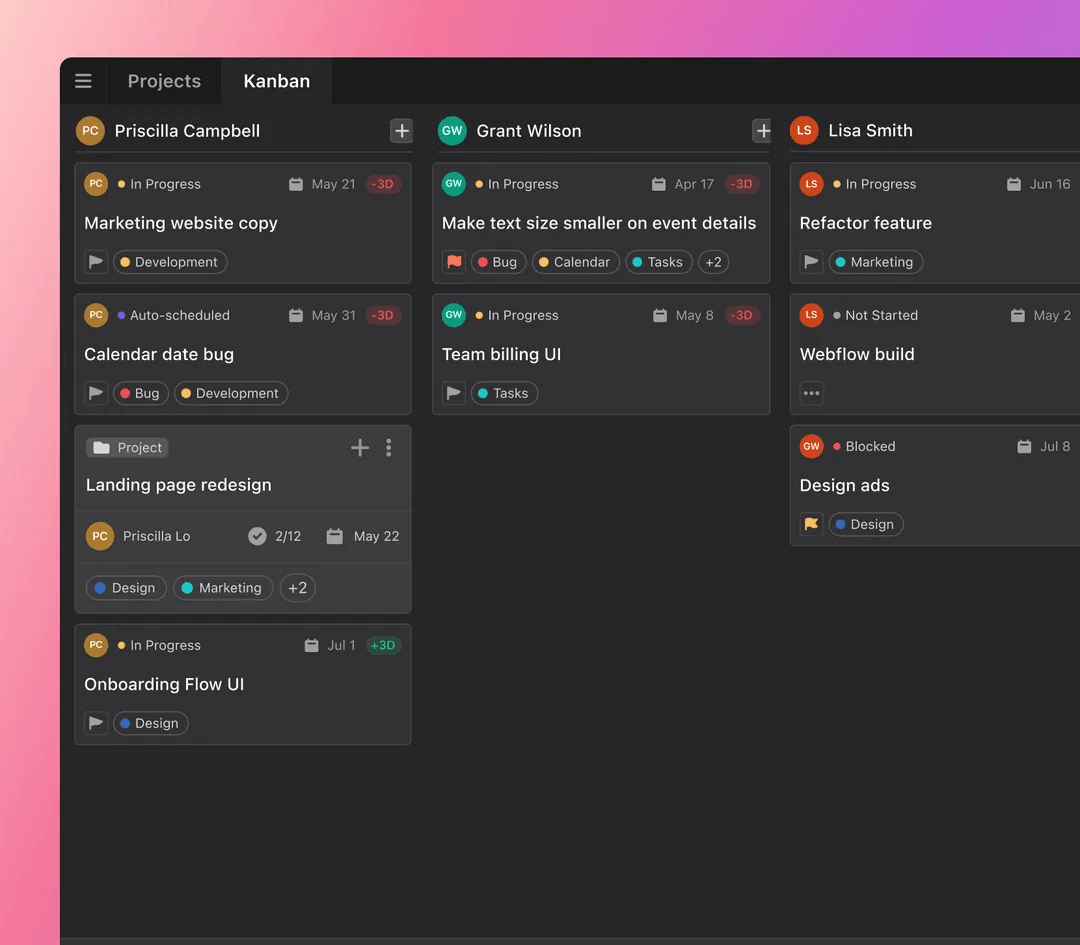Have you ever been in a meeting that left everyone feeling confused about a project or company goals rather than informed? Missteps in group communication can lead to a domino effect of misunderstandings and inefficient workflows.
But effective group communication is more than just talk — it’s about making sure everyone is on the same wavelength. Pulling this off isn’t easy. The challenge lies in balancing different perspectives while guiding everyone toward a common goal.
In this guide, we identify the signs of poor group communication and explore the art of communicating effectively as a group.
What is group communication?
Group communication, or team communication, is the process of exchanging information, ideas, and feedback among your team. It involves both verbal and nonverbal communication, like body language and tone of voice.
Group communication is shaped by group norms, roles, and interpersonal relationships. These elements dictate the flow of communication, determine who speaks and who listens, and regulate how feedback is given and received.
Small-group communication vs. large-group communication
Small-group communication usually involves a handful of people, allowing for informal interactions. They often lean on more intimate communication methods, such as person-to-person chats or small team huddles. The cozy setting makes it easier for everyone’s voices to be heard, promoting rapid idea generation and problem-solving.
On the other hand, large-group communication involves a broader audience and more formalized structures and processes. Bigger organizational structures use tools like mass emails and group presentations to get messages across to hundreds or thousands of people.
While individual input might sometimes be overshadowed with a large group, the diversity of voices brings varied perspectives. It’s also possible to find comprehensive solutions thanks to a broader set of insights.
5 signs your group communication is breaking down
Effective group communication is like the glue that holds a team together. When communication starts to wane, it can lead to a series of problems that hinder a team's success. It's important to recognize the red flags as soon as they arise.
Here are five telltale signs that your group communication may be on the fritz:
1. Disconnected team
When team members feel disconnected, there's a noticeable lack of engagement and active participation. This is reflected in poor meeting attendance or radio-silent meetings, or a marked drop in collaborative discussions.
In larger groups, disconnection can lead to the formation of silos, where sub-groups operate independently. The fragmentation can negatively impact overall group synergy and communication.
2. Increased misunderstandings
Misunderstandings happen more and more frequently. In fact, 53% of people have missed messages as a result of poor communication at work. Repeated backtracking and re-explaining eat into your team’s productive time, but cloudy messages force team members to constantly seek clarity.
This atmosphere plants seeds of doubt in your team. They often question if they're all on the same page at all.
3. Rising tensions
Small conflicts escalate into full-blown fights. Your group dynamic and energy have changed — what used to be cordial relationships are now strained. It feels like walking amid landmines, with every move being a potential trigger.
 |
Especially in larger groups, where you have to deal with more personalities, the likelihood of clashes increases.
4. Reduced productivity
Your team’s productivity is taking a hit. Tasks that once seemed straightforward now take much longer. On top of that, you notice an uptick in errors stemming from miscommunication.
Nearly 50% of workers report their productivity being affected by poor communication. Clearly, when communication falters, productivity and efficiency suffer.
5. Low morale
When communication breaks down, so does the team spirit. Members feel undervalued and overlooked, and they start believing that their voices don’t matter. As a result, members start to distance themselves from team initiatives or discussions.
And not before long, low morale becomes contagious, dampening the energy and motivation of even the most dedicated team members.
Benefits of group communication
While technology has made communication more accessible, it doesn’t mean we have gotten better at communicating. In fact, 32% of people in a 2023 survey believed communication with colleagues had become more of a challenge in the last 12 months.
As a manager, improving group communication and resolving communication issues can offer numerous advantages, such as:
Boosted collaboration and synergy
Effective group communication is the bedrock of effective collaboration. Welcoming and listening to diverse viewpoints helps you create the opportunity for deeper conversations and more innovative solutions.
As team members complement each other's strengths, there's a tangible synergy in their work. Teams start working better together.
Better problem-solving
Group communication means pooling everyone's knowledge. Different team members contribute their own set of expertise.
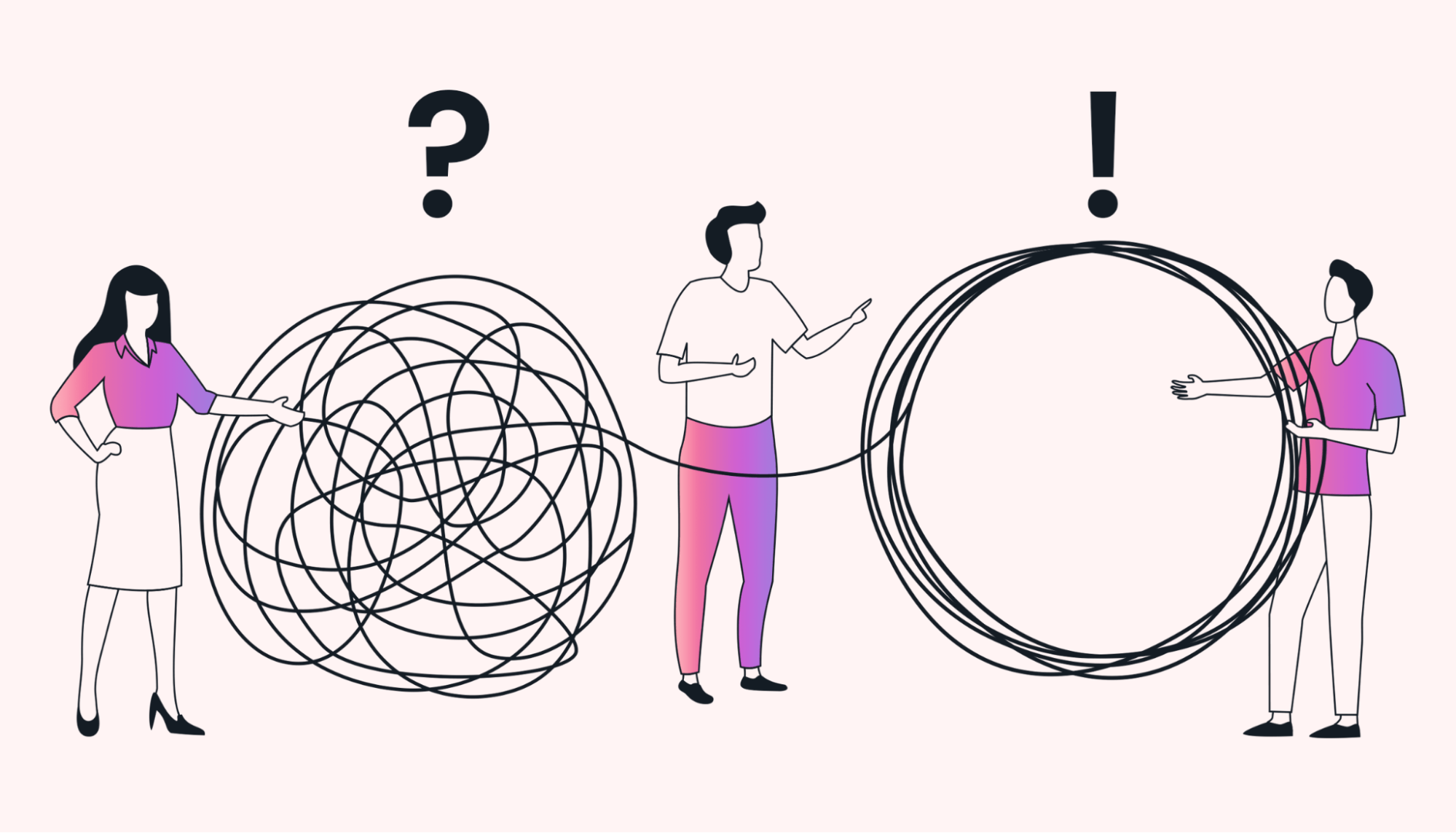 |
When issues arise, a collective brainstorm can lead to quicker and more well-rounded solutions. With more minds to tackle challenges, problem-solving is more effective.
Increased engagement and morale
Team members feel heard and important. This not only boosts morale but also creates a sense of belonging and shared purpose.
Moreover, effective group communication nurtures trust and transparency, which encourages more active participation and enthusiasm in team activities and discussions.
Faster decision-making
With clear group communication, discussions are streamlined and bottlenecks decrease. There's less back-and-forth, and everyone is aligned from the start.
Having timely input from all relevant stakeholders also ensures that the decision-making process is quick and effective. This reduces delays and promotes action-oriented outcomes.
Strengthened team relationships
A recent study revealed that 52% of workers admitted poor communication affects their trust in their team. Through transparent group communication, you can build stronger bonds and a good rapport.
Embracing and understanding different team members' perspectives not only adds value to discussions but also cements team unity and mutual respect.
Group communication channels
To master group communication, we need to first understand the tools and channels at our disposal.
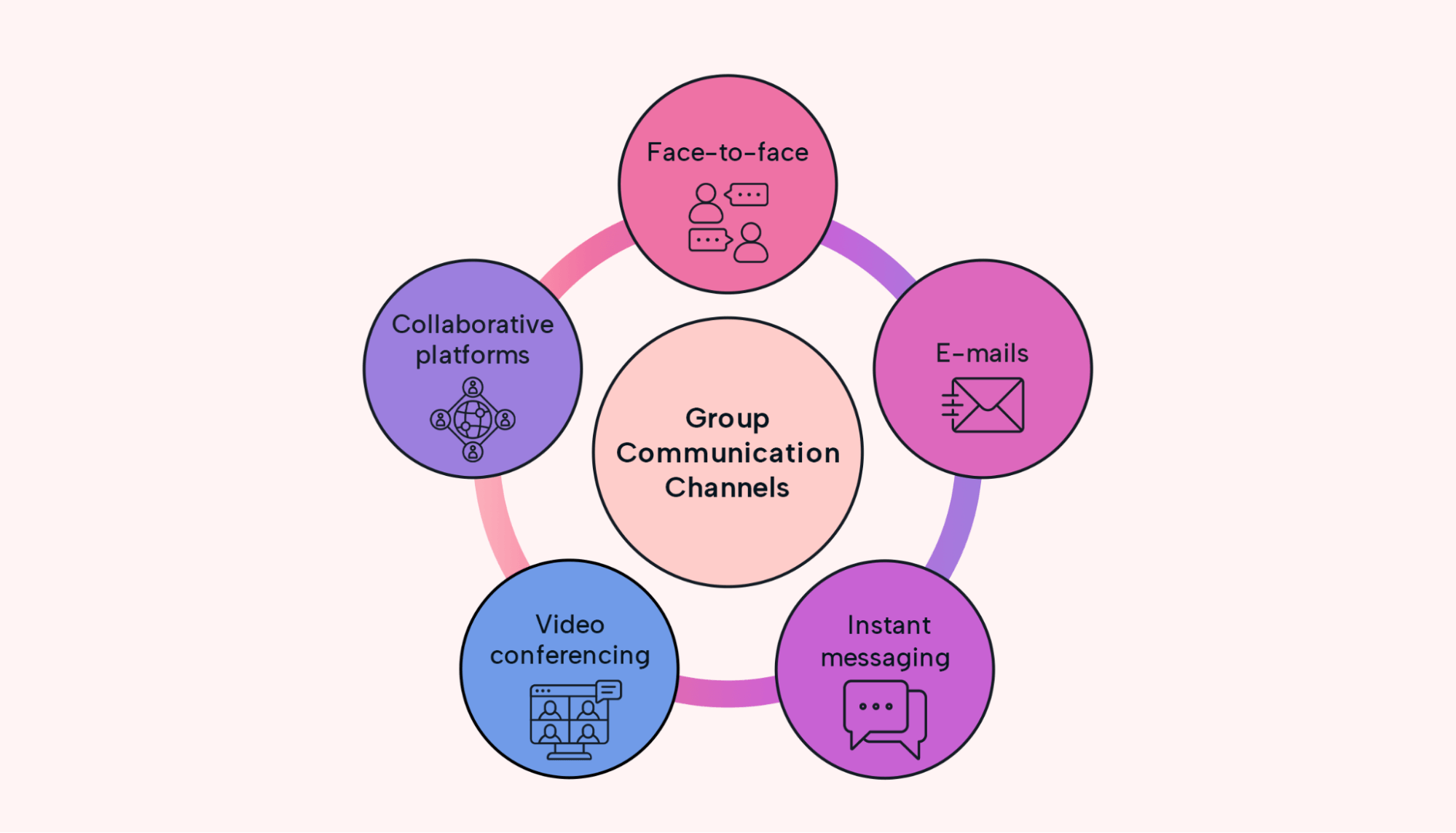 |
Face-to-face meetings
Face-to-face meetings remain a timeless method for group communication. It’s the classic and most direct approach to get a message across.
Because you can see the person right in front of you, you have the advantage of capturing the nuances of nonverbal communication and fostering a genuine connection among team members.
The direct nature also allows for spontaneous feedback. This immediacy can reduce misunderstandings. You’re also able to address issues right away.
Suitable for:
- Personal feedback reviews
- Conflict resolution
- Brainstorming sessions
- Small group meetings
Emails
Emails serve as a reliable choice for formal communication, documentation, and asynchronous updates. They are great for providing detailed explanations of projects or instructions and for sharing important attachments.
The flexibility makes emails suitable for a wide range of scenarios within the professional sphere. They also accommodate busy schedules by allowing recipients to access and respond to messages at their convenience.
Suitable for:
- Formal announcements
- Documentation of decisions and agreements
- Asynchronous communication
- Distributing files and attachments
Instant messaging
Instant messaging is a quick and accessible solution for addressing questions, clarifying queries, and engaging in real-time discussions or informal chats. It’s a versatile mode of communication because you can use it via a mobile app and communicate on the go.
This platform enables fast communication and the exchange of ideas. It promotes real-time collaboration, making it ideal for quick decision-making and efficient problem-solving.
Suitable for:
- Quick inquiries
- Informal conversations
- Sharing brief updates and notifications
Video conferencing
Video conferencing serves as a bridge between face-to-face and digital communication. This has become a common communication channel since the pandemic, and it’s essential for connecting remote teams.
Through high-definition video and crisp audio, video conferencing preserves the human touch in virtual interactions.
Suitable for:
- Remote team meetings
- Presentations
- Interviews
- Client meetings
Collaborative platforms
Collaborative platforms, such as Motion, are tools for project management and progress tracking. They help teams communicate by providing a centralized space for sharing updates, assigning complex tasks, and monitoring progress.
For example, Motion allows you to track each team member’s progress and communicate directly on project boards, making sure everyone is on the same page.
Suitable for:
- Team updates
- Task assignment
- Project discussion
7 strategies to enhance group communication
Whether you're leading a project, managing a remote team, or working in a collaborative environment, effective group communication is a key ingredient for success.
Here are seven strategies to help you enhance team communication:
1. Practice active listening
As the age-old saying goes, "We have two ears and one mouth so that we can listen twice as much as we speak."
Active listening is a specialized skill that embodies this principle. It involves giving your full attention, asking clarifying questions, and providing feedback only after genuinely understanding what has been said.
As a leader, when you prioritize listening over talking, you create a space where your team members are encouraged to express their ideas and concerns openly. This, in turn, leads to more robust discussions, better problem-solving, and enhanced collaboration.
Most importantly, it ensures that everyone feels heard and valued, contributing to a more cohesive and productive team environment.
2. Set clear roles and responsibilities
Setting clear roles and responsibilities reduces confusion and overlapping tasks. This clarity enhances the efficiency of group communication.
When each team member knows their role, it creates a sense of accountability and purpose because everyone is aware of their specific contributions to the team's goals.
Motion, as a powerful task management tool, automatically delegates tasks to the most appropriate team member and allows you to track each member's progress. This feature streamlines the distribution of responsibilities and ensures that everyone is aligned with their tasks.
3. Understand each person’s communication style
Effective communication hinges on understanding and adapting to various communication habits based on different personalities. According to DiSC, there are four core personality styles that impact how people communicate:
- Dominance: Results-driven and direct, they prioritize business goals and may come across as very straightforward.
- Influence: Relationship-focused, they excel at persuading and collaborating with others with enthusiasm.
- Steadiness: Cooperative and calm, they prefer a more gradual pace and enjoy cooperation.
- Conscientiousness: Detail-oriented and precise, they value expertise and accuracy.
Offering communication skills training workshops on different communication styles can significantly improve group dynamics. By educating team members, you empower them to communicate with compassion and build stronger relationships.
4. Encourage open communication
It's important to create an environment where team members feel safe expressing concerns and ideas openly. Fostering open communication strengthens trust, promotes teamwork, and enables more efficient problem-solving.
Open communication that doesn’t discriminate between positions often leads to the discovery of new ideas and perspectives that may not have been considered otherwise.
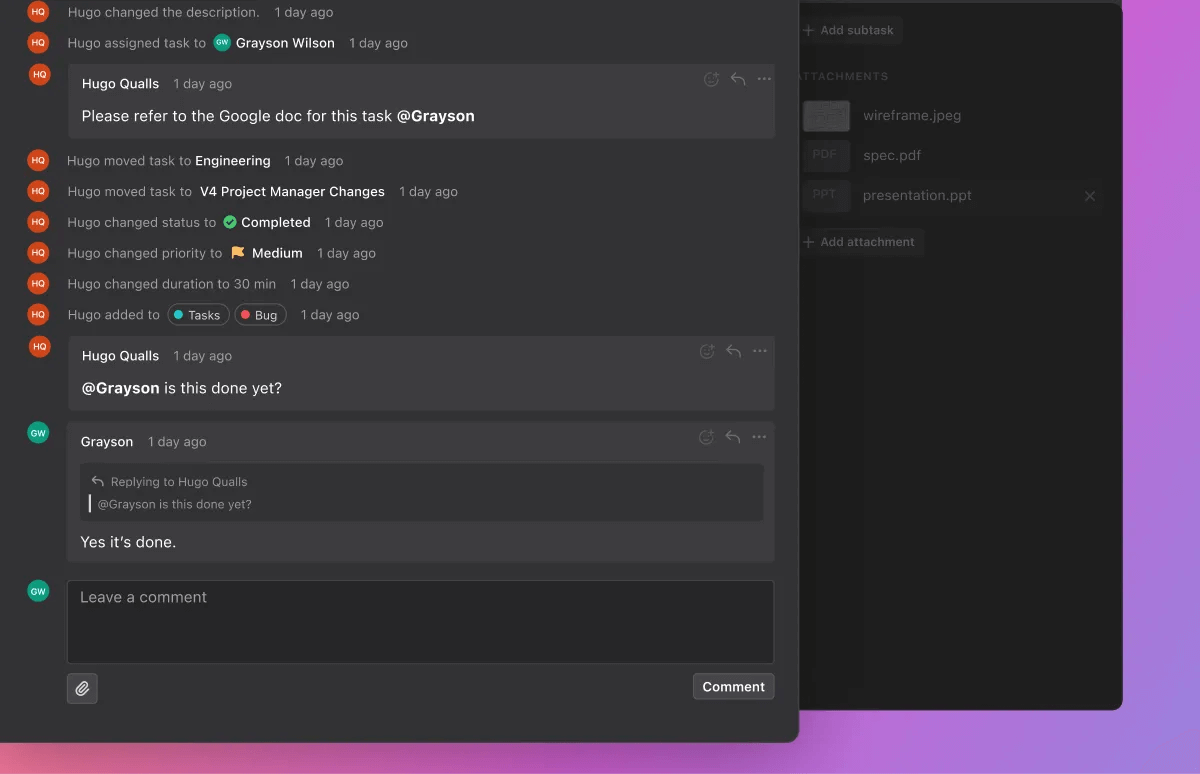 |
Motion plays a valuable role in this by allowing teams to directly comment on projects, facilitating real-time discussions and feedback. This also promotes transparency and keeps all project stakeholders updated and aligned.
5. Use the right communication tools
Knowing when to use chat, email, or face-to-face interactions can significantly impact the clarity and efficiency of your communications. Avoid over-relying on a single communication channel, as this can limit your team's ability to convey complex ideas or address urgent matters appropriately.
Creating a project communication plan that outlines which tools to use for specific types of communication can be highly beneficial. This plan ensures that everyone is on the same page and helps prevent miscommunication.
 |
Motion further simplifies this process by integrating various communication platforms, such as Zoom for video conferencing and Google Calendar for scheduling face-to-face meetings. This seamless integration extends the versatility of your communication toolkit, so you have the right tool for every situation.
6. Lead by example
Effective group communication starts with leadership. Leaders who demonstrate open and respectful communication set the tone for the entire team. For example, they actively participate in discussions, resolve conflicts constructively, and offer guidance when needed.
An open-door policy is a practice where leaders keep their doors figuratively or literally open for team members to approach them with any issues, ideas, or concerns. This accessibility shows the team that you are approachable and welcome discussion. Team members are more likely to share their thoughts and concerns when they feel their voices are heard and valued.
Leading by example not only encourages effective communication, but also enhances trust, creativity, and overall team performance.
7. Conduct regular feedback sessions
Regular feedback sessions offer team members the opportunity to express their concerns, provide suggestions, and share their insights. This contributes to a more open and transparent communication environment.
It's equally important to ensure that team members are comfortable with both giving and receiving feedback. A two-way feedback process helps build trust and mutual respect within the team, ultimately enhancing overall communication.
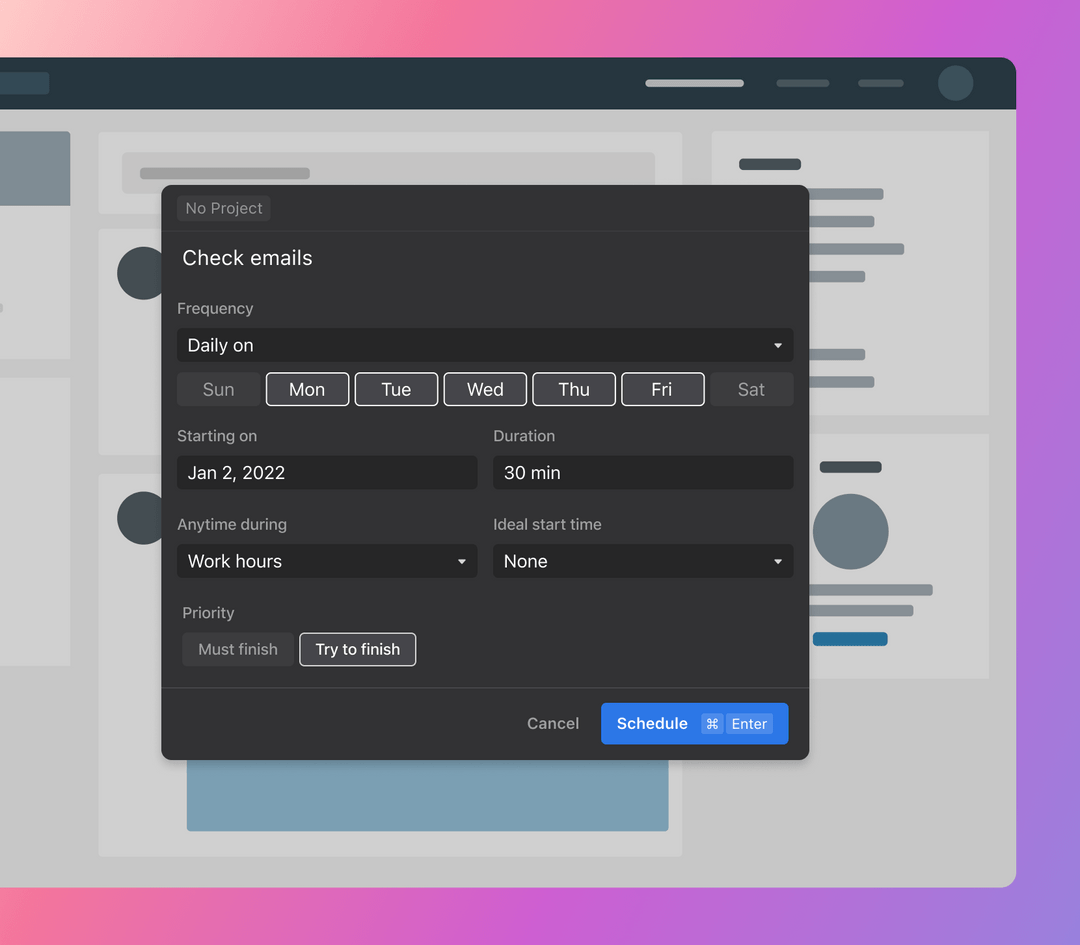 |
Motion helps you schedule regular feedback sessions and create recurring tasks to follow up on action items from these meetings. This feature strengthens the feedback loop, making sure that any issues are addressed promptly.
Strengthen your group's communication with Motion
It might come as a surprise, but 82% of workers report improved communication and alignment with their colleagues through project management tools like Motion.
We provide a range of features to enhance group communication, from real-time discussions to task assignments and feedback loops. Communicate better with Motion — sign up for a free trial today.


